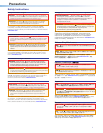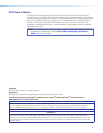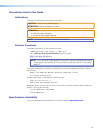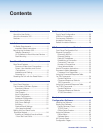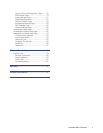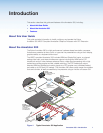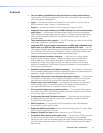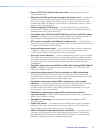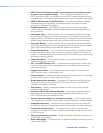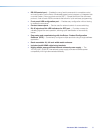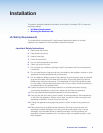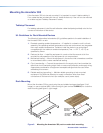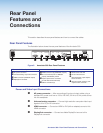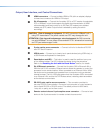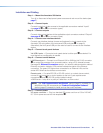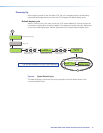
• HDCP Visual Confirmation provides a green signal when encrypted content
is sent to a non-compliant display — A full-screen green signal is sent when
HDCP-encrypted content is transmitted to a non-HDCP compliant display, providing
immediate visual confirmation that protected content cannot be viewed on the display.
• HDMI to DVI Interface Format Correction — Automatically enables or disables
embedded audio and InfoFrames, and sets the correct color space for proper
connection to HDMI and DVI displays.
• Seamless switching — Seamless cut through black and fade through black
transition effects are available to enhance presentations by eliminating distractions
during switching.
• Auto-Image setup — When activated, the unit automatically optimizes the image
by analyzing and adjusting to the video input signal. This can save time and effort in
setting up a newly connected source, particularly in presentation environments where
different guest presenter laptops with various output resolutions will be connected.
• Auto Input Memory — When activated, the unit automatically stores size, position,
and picture settings based on the incoming signal. When the same signal is detected
again, these image settings are automatically recalled from memory.
• Output Standby Mode — The unit can be set to automatically mute video and sync
output to the display device when no active input signal is detected. This allows the
projector or flat-panel display to automatically enter into standby mode to save energy
and enhance lamp or panel life.
• Power Save Mode — The unit can be placed in a low power standby state to
conserve energy when not in use.
• AFL - Accu-RATE Frame Lock — A patented technology exclusive to Extron that
locks the output frame rate to a designated input to eliminate stuttering caused by
frame rate conversion.
• Image freeze control — A live image can be frozen using RS-232 serial control,
USB, Ethernet control, or the annotation GUI.
• Picture controls — Available for adjusting brightness, contrast, color, tint, and detail,
as well as horizontal and vertical positioning and sizing.
• Quad standard video decoding — A temporal, 3D adaptive comb filter provides
advanced decoding of composite NTSC 3.58, NTSC 4.43, PAL, and SECAM for
integration into systems worldwide.
• User presets — Memory presets are available for each input to store and recall
optimized image settings.
• Automatic 3:2 and 2:2 pulldown detection — Advanced film mode processing
techniques that help maximize image detail and sharpness for NTSC, PAL, and
HDTV 1080i sources that originated from film.
• Internal video test patterns for calibration and setup — The unit offers several
video test patterns to facilitate proper system setup and calibration of display devices.
• Integrated audio delay — Embedded audio is passed through to all outputs and
automatically delayed to compensate for latency introduced by the video processing.
• Front panel security lockout — This feature locks out all front panel functions
except for input selection; all functions however, are available through Ethernet, USB,
or RS-232 control.
• Ethernet monitoring and control — Enables control and proactive monitoring over
a LAN, WAN, or the Internet.
• Built-in Web pages — Enables the use of a standard browser for monitoring over an
intuitive Web interface.
Annotator 300 • Introduction 4



